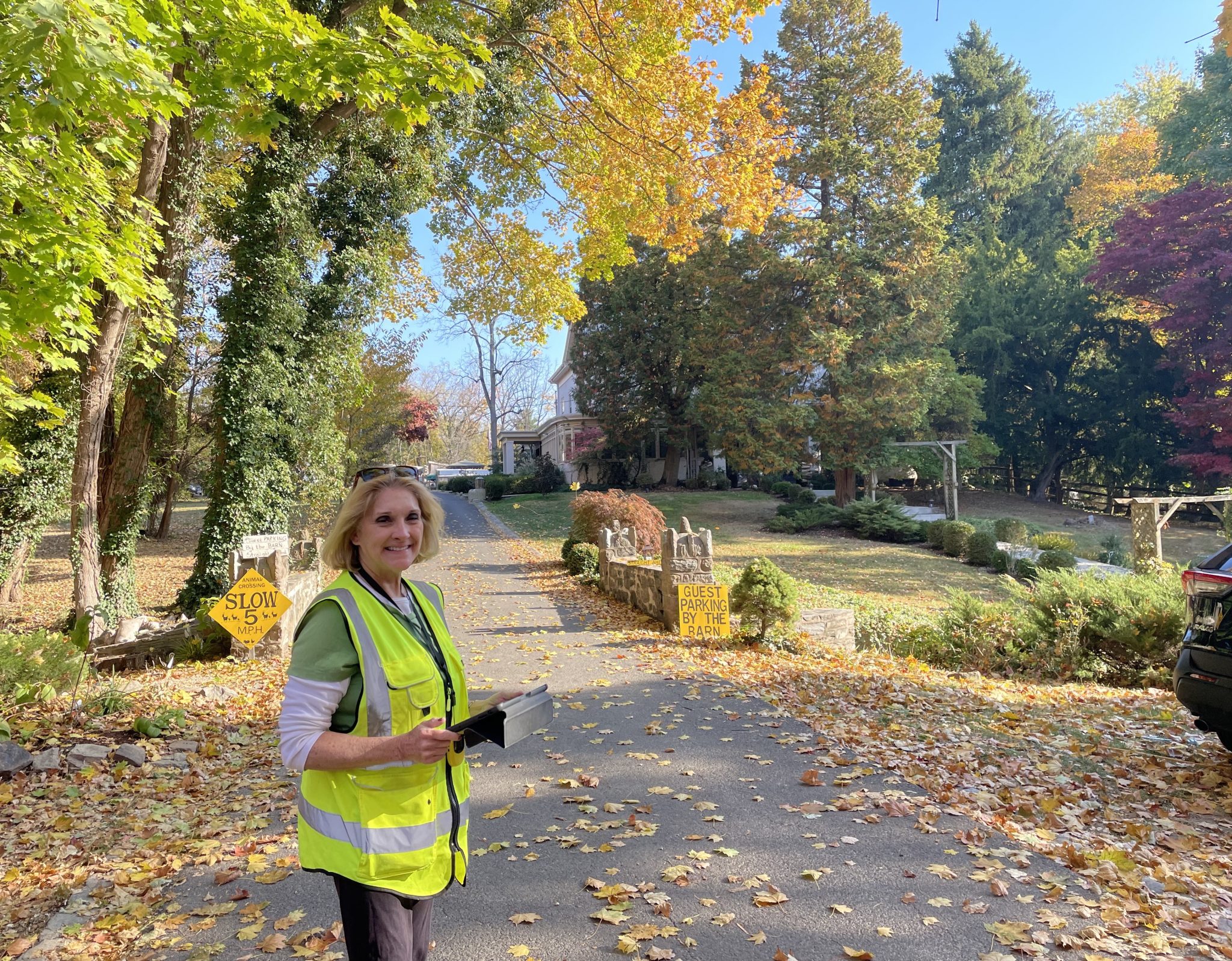Boots on the Ground: Conservation in Action
Mary Lou McFarland pulls into a small gravel parking area just off a main road in Dresher on a crisp fall morning. She is outfitted in a neon yellow vest for visibility to hunters and carries an iPad, pepper spray, and chocolates.
Our boots on the ground, Mary Lou, one of three Heritage Conservancy staff members who monitor privately owned land that is protected by Heritage Conservancy under easement. In addition to overseeing our historical preservation efforts, she is responsible for monitoring our 14 conserved properties in Montgomery County.
As a Land Trust, Heritage Conservancy not only conserves land, but enforces the terms of its legal agreements – the conservation easements – that protect these parcels from development in perpetuity. So the commitment is long term and requires an ongoing staff commitment.
Heritage Conservancy monitors properties like these annually to protect the natural, and sometimes historic, values of the property.
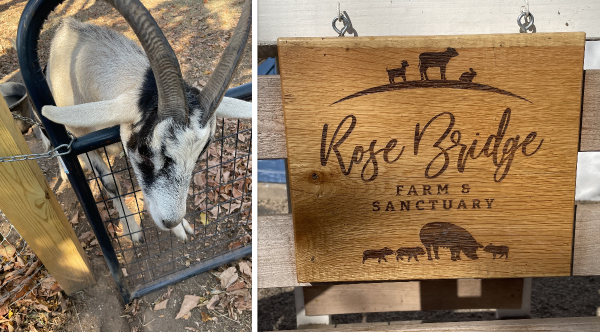
Rose Bridge Farm & Sanctuary
Today Mary Lou is monitoring the Sutch Property, better known as Rose Bridge Farm and Sanctuary. This historic farmstead includes an organic farm and an impressive animal sanctuary tended by volunteers that draws small school groups and weekend visitors.
The sanctuary is home to pigs, lambs, goats, and sheep. You’ll find mini donkeys that came to live here after stints in a live nativity. And there are two cows that were bought at livestock auction to be spared from butchery.
The dairy camels that live on the property are a favorite of Kristin’s, the farm’s owner. She extolls the benefits of camel milk and uses it to make natural soaps, lip balms, and skincare products that she sells alongside the farm’s organic produce, heirloom vegetables, and flowers in season. For our fall visit, there are late tomatoes and a colorful assortment of pumpkins and gourds.
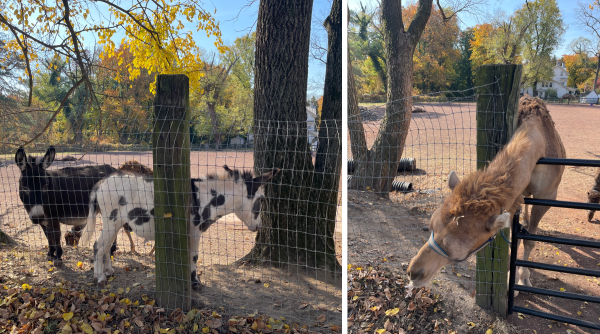
This 13-acre parcel of land was conserved by Heritage Conservation in 2007. And like all properties protected by Heritage Conservancy, it is monitored annually. Newer technology allows staff to monitor sites by satellite, but they make a point to visit in person every couple years as well, or more often if aerial images suggest a potential problem.
The visit to Rose Bridge is a standard one. “I enjoy visiting with property owners and helping them with any questions or concerns that they may have,” says Mary Lou. Most, like Kristin, work as conservation partners with us, complying with the terms of their easement even when it was placed on the property by a previous owner. This farm was preserved in 2007 and changed hands in 2013, when Kristin bought it at auction.
When a preserved property changes ownership, that protection stays with the property and is passed to the all future owners as part of the deed. So she must live by the restrictions that protect this parcel from being developed. Fortunately, she shares the values that underpin the agreement.
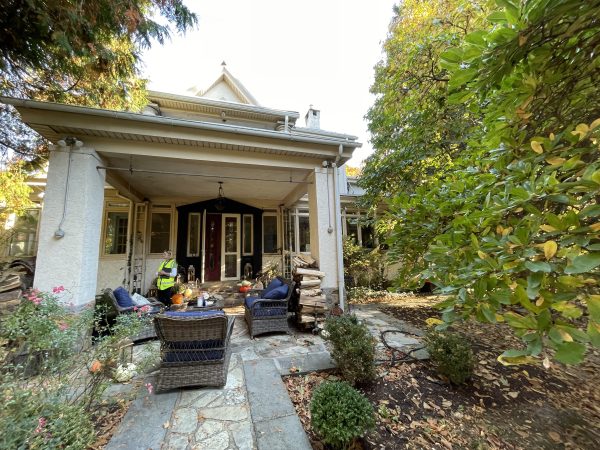
History and Connection: Continuity Through Easements
The land and buildings on this parcel date back to the 1700s. The main house was built around 1735. Other historical structures remain on the grounds, including the ruins of a rather elaborate 2-story spring house. Mary Lou and Kristin discuss the structure and its adjoining cistern. Mary Lou offers to dig through files at Heritage Conservancy to find photos of this or similar structures.
Though the buildings are not explicitly protected by a facade easement, the owner respects their history and would like to restore the springhouse in time.
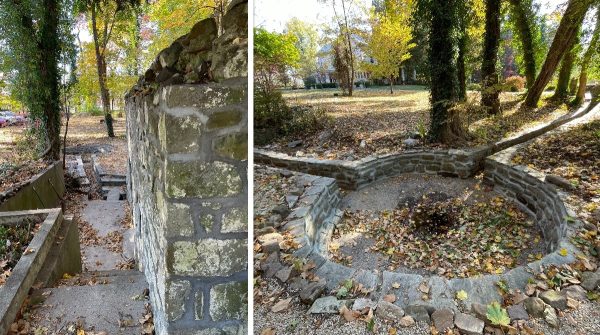
Beyond the natural beauty and historic lineage of the property, Kristin was drawn to its more recent history, including the woman who lived here for most of the 20th century. Its previous owner, Amelita, grew up on the farm and spent her whole life here, save a brief stretch when her first husband served in the military.
She cultivated 350 rose bushes on the property. Amelita was also well known for training horses for harness racing, and an outline of the track is still visible on the property. Like Kristin, she kept animals and met her second husband, a large-animal vet, when he came to check on one of her horses.
Mary Lou has also served as a bridge between the two owners of the property. Having it in her portfolio for 17 years, she knew the property and its owner before she passed and the farm was preserved.
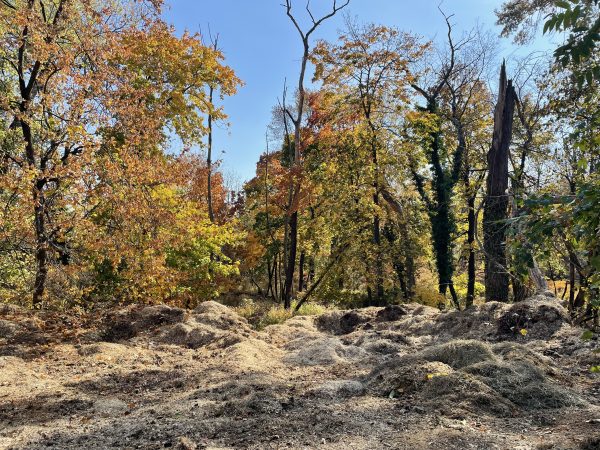
Compliance and Filing
After walking the grounds and catching up with Kristin, Mary Lou says her goodbye and sets off on foot to walk the perimeter and back parts of the property on her own. Using her iPad to take photos and notes as she goes, information is geotracked to specific parts of the property.
Mary Lou has access to the details and terms of the conservation easement, including the zones that have strict usage restrictions, and she checks them for compliance. Monitoring visits can turn up boundary infringements from neighbors, unsanctioned sheds and structures, dumping, ATV trails, and other violations. For this visit, everything is in compliance.
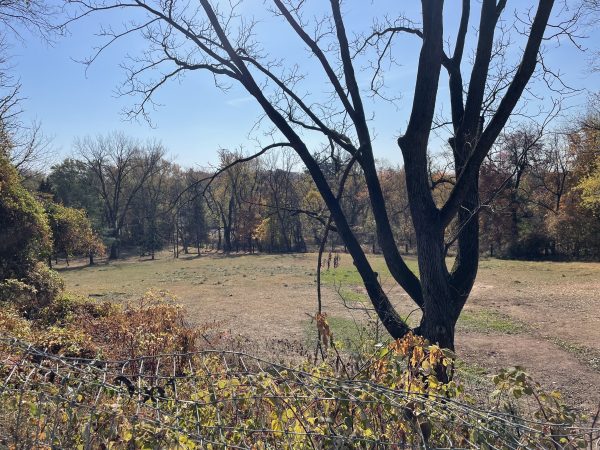
Mary Lou steps off trail, unchains a fence to access a gated area, and meanders into the outer parts of the property to check on its appearance against baseline information. Though she feels safe here, she carries pepper spray on visits in case of an unwelcome encounter with menacing wildlife.
But happily, today’s visit ends with a very pleasant brush with a herd of rescued baby goats, and their keeper who snuggles one like an infant in his arms. The sun is shining, the fall color is at its zenith, and this compliant Montgomery County farm is a splendid place to be – and should remain so for generations to come.
